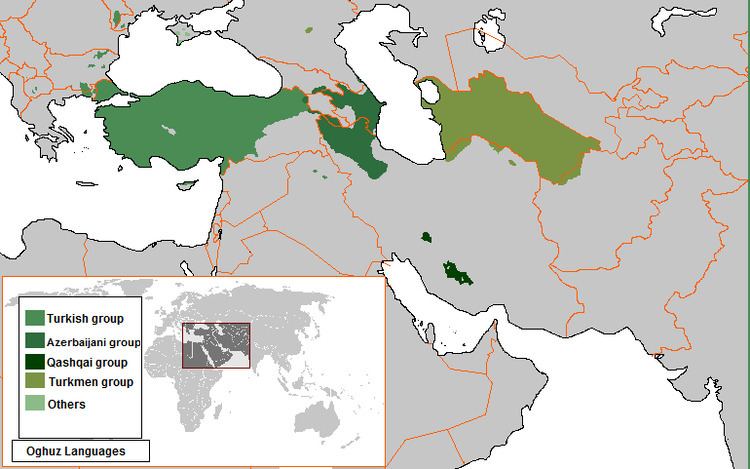 | ||
Linguistic classification TurkicCommon TurkicOghuz Subdivisions † Old Anatolian Turkish† Ottoman Turkish† Karamanli TurkishUrumGagauzTurkishAzerbaijaniTurkmenQashqaiKhorasaniSalar Glottolog oghu1243 (Oghuz + Kipchak + Uzbek) | ||
The Oghuz languages are a sub-branch of the Turkic language family, spoken by close to 150 million people in an area spanning from the Balkans to the Great Wall of China.
Contents
The term
The term Oghuz is applied to the Southwestern sub-branch of Common Turkic languages, including Turkish, Azerbaijani and Turkmen spoken in Turkey, Azerbaijan, Turkmenistan, Iranian Azerbaijan, Iraq, Syria, and the Balkans. In the 8th century, the Oghuz tribes migrated to Central Asia from the Altai Mountains, and then they started to spread out through Central Asia and Khwarezm to the Middle East and Balkans. With time, the name "Oghuz" was replaced by the names "Turkmen", "Seljuk", "Azerbaijani", and later "Ottoman Turk".
Languages
The Oghuz languages may be broken down into three main groups, based on geography and shared features:
An outlying language, Salar, is spoken by about 70,000 people in China.
Two further languages, Crimean Tatar and Urum, are historically Kypchak languages, but have been heavily influenced by the Oghuz languages.
The extinct Pecheneg language is probably Oghuz, but as it is poorly documented, it is difficult to further classify it within the Oghuz family.
Linguistic features
The Oghuz languages share a number of features that have led linguists to classify them together. Some of these features are shared with other Turkic languages; others are unique to the Oghuz family.
